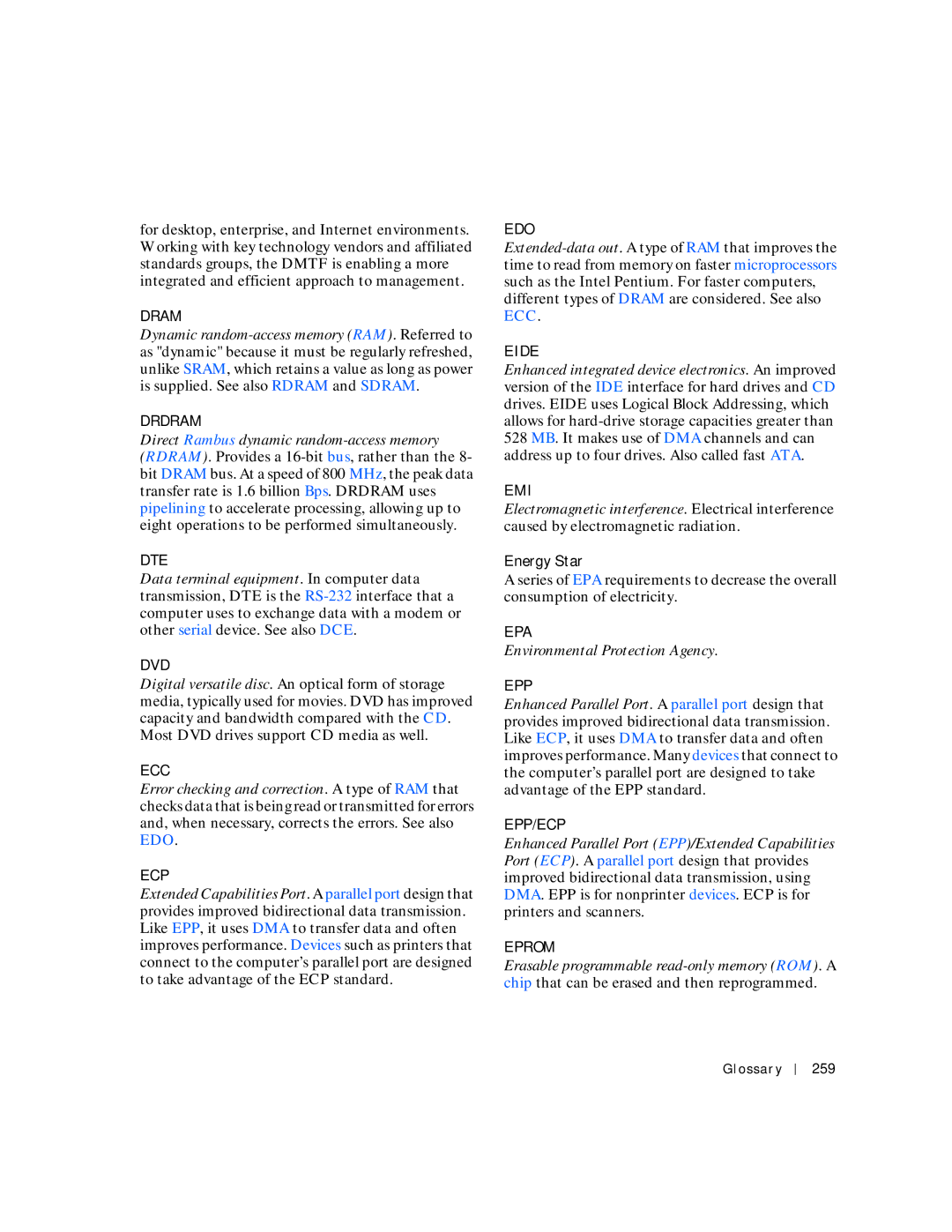for desktop, enterprise, and Internet environments. Working with key technology vendors and affiliated standards groups, the DMTF is enabling a more integrated and efficient approach to management.
DRAM
Dynamic
DRDRAM
Direct Rambus dynamic random-access memory
(RDRAM). Provides a
DTE
Data terminal equipment. In computer data transmission, DTE is the
DVD
Digital versatile disc. An optical form of storage media, typically used for movies. DVD has improved capacity and bandwidth compared with the CD. Most DVD drives support CD media as well.
ECC
Error checking and correction. A type of RAM that checks data that is being read or transmitted for errors and, when necessary, corrects the errors. See also EDO.
ECP
Extended Capabilities Port. A parallel port design that provides improved bidirectional data transmission. Like EPP, it uses DMA to transfer data and often improves performance. Devices such as printers that connect to the computer’s parallel port are designed to take advantage of the ECP standard.
EDO
EIDE
Enhanced integrated device electronics. An improved version of the IDE interface for hard drives and CD drives. EIDE uses Logical Block Addressing, which allows for
EMI
Electromagnetic interference. Electrical interference caused by electromagnetic radiation.
Energy Star
A series of EPA requirements to decrease the overall consumption of electricity.
EPA
Environmental Protection Agency.
EPP
Enhanced Parallel Port. A parallel port design that provides improved bidirectional data transmission. Like ECP, it uses DMA to transfer data and often improves performance. Many devices that connect to the computer’s parallel port are designed to take advantage of the EPP standard.
EPP/ECP
Enhanced Parallel Port (EPP)/Extended Capabilities Port (ECP). A parallel port design that provides improved bidirectional data transmission, using DMA. EPP is for nonprinter devices. ECP is for printers and scanners.
EPROM
Erasable programmable
Glossar y
259
